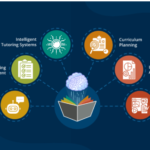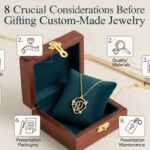Tell me a bit about the role of art in your life and when you found an interest in illustration.
I look at art–broadly, across disciplines–as a pathway or a conduit toward an altered consciousness. Even before I knew what that meant, I could still feel it, and I think that’s true of anyone.
As a very young child watching the original Fantasia on VHS, for example, I might not have known exactly why the film, and its combination of beautiful, timeless music and innovative, immensely skilled visual animations made me feel differently, or why my thought processes would take on unusual patterns, but I nonetheless did feel differently; I did think differently. And the wonder and stimulation that comes from being affected by art in that way is ubiquitous. It’s what makes art universal.
Art is, therefore, a huge part of my life, and I try to make it so deliberately. I’m a strong believer in the crossover ability of art to influence art. I have certain playlists that I’ve created to evoke certain moods and modes of thought that I can channel constructively during my own illustration sessions.
I first started drawing sometime in first or second grade probably. I can’t exactly pinpoint the exact genesis of that passion. My mother is an artist as well–she works mostly with stained glass, but is very competent with paint and pen as well. I’m envious of her eye for color, actually, but she says I’ve got a better handle on form and line, which is perfect for illustration.
I do remember buying How To Draw books at the annual book fairs at my elementary school. I remember the initial frustration, as well as the inevitable thrill that came from practicing the drawings in those books. I wasn’t the best “student” and would often skip steps, break rules and deviate from instruction, even from a young age, which sometimes meant failing, but also led to some happy accidents and moments of true self-discovery.
Another big influence from a young age was that of Japanese comics–manga–which had become extremely popular in Hawaii during the ‘80s after the arrival of other Japanese media, especially the TV show Kikaida which, although it wasn’t animated, triggered a kind of obsession with Japanese media and culture within the world of young adult pop culture consumers in Hawaii.
I’m a 60-40 Introvert/Extrovert, and I grew up in the country, while most of my friends from school lived within the city limits of Honolulu. So, until I was old enough to get a driver’s license, I spent a lot of time after school drawing for entertainment and stimulation. I started doing comics and editorial cartoons for the University of Hawaii, Manoa, school newspaper, Ka Leo O Hawaii. This was my first regular exposure to a wide, public audience and I really enjoyed sparking discussions with my work. Not every discussion was positive, and I definitely was far short of a pro when it came to figuring out the fine line between provocative and careless. But that was a great experience. After a few years as editor of the comics page, I became editor of the whole paper, but still contributed cartoons regularly. In 2011, I won first place in a national award competition for student cartoonists, as well as second place in a statewide award competition for professional cartoonists for an editorial cartoon I did about the birth of the Tea Party.
It’s incredibly difficult to do editorial cartoons for a living these days. So I’ve since done a lot more writing and journalism. But creating cartoons and illustrations is still my real passion, and I do it whenever I can.
What are the traditional arts of Hawaii?
The traditional arts of Hawaii include Featherwork (Hulu Manu), Tattoo (Kākau), Bark cloth (Kapa), Garland (Lei), Weaving (Ulana Lau Hala), as well as visual storytelling expressed through the Hula, which combines dance with other musical artforms such as chant (oli) and song (mele). Ancient Hawaiians were also incredibly gifted poets, composing epic works such as the Kumulipo, which tells one version of the creation of the universe. Ancient Hawaiian navigational techniques could also be considered an artform. There are undoubtedly some that I am missing, as I am not an expert, per say. But indigenous art from Hawaii, and from the Pacific, is visually and emotionally powerful and the collections at Bishop Museum and the Honolulu Museum of Art are truly inspiring. Contemporary Hawaiian artists often mix modern media with ancient themes and kaona, or hidden, layered meaning. And that certainly gets the consciousness altered.
How has your work been received in Hawaii?
I would say that I’m pretty obscure outside of the regular readers of The Hawaii Independent, which has published a number of my cartoons, and even then, the circle of people who would recognize a cartoon or illustration as mine is probably very small. Partially because I’m such an introvert, I do a poor job of promoting myself and networking with other artists. Occasionally someone will remember my work from Ka Leo. I haven’t checked the traffic on my website in a while, and I post so irregularly and infrequently that I can’t imagine it being very high. But I get fairly regular requests to do illustration projects and collaborations with other emerging artists in different disciplines, which is really fun. Most recently, a mayoral candidate commissioned a series of illustrations to visually break down a complicated policy he was proposing; a friend had me do a logo for his video game blog, the Drunken Marmoset; I also created an extensive series of illustrations for a local folk musician’s latest album, which involved some thematic world-building; and I also created a series of illustrations for another local musician’s latest music video, Daylight, which slow-pans and cuts between the drawings. You can watch the rough cut here. More regularly, I generally contribute an illustration or two to each issue of Summit, and then–when I have time and an idea strikes me–I’ll do a political cartoon or a cartoon strip. I also enjoy participating in an annual comic swap where cartoonists write a script and let someone else draw it, and also receive a script from another cartoonist to draw themselves. I just completed that project:
Comic strips, cartoons and illustration in general, have always played an important role in relaying significant messages of political and societal concerns. What kind of research is considered before illustrating a piece? What things would you not consider depicting in your art?
Yes, that is absolutely true. Political cartoons first came into vogue during the 1800s Enlightenment period in France as a way to critique and, a lot of the time, just attack and debase powerful figures who were viewed as anti-populist or simply part of the aristocracy. The idea of grotesque representations of these figures is the precursor for the modern caricature. Some of the most famous ones come from the late 1800s and early 1900s in America, including a really great one about Boss Tweed and the Taminy Hall democrats in New York City around the time Teddy Roosevelt as Police Commissioner and then Governor was trying to clean up the corruption in New York politics. This was also a great time of cross-stimulation between cartoonists and investigative journalists like those writing for Harper’s, and really demonstrated the strength and the reinforcement that journalism and editorial cartooning have when they work in tandem to uncover corruption and then pin it to the public consciousness with that one, perfect image that captures the essence of the issue in one glance.
For me, I usually default to writing a story, or maybe an op-ed, whenever I come across an issue that needs attention. But, sometimes, the issue is either so ridiculous, or naturally lends itself to visual media, and I’ll say to myself, “OK, that needs a cartoon to be drawn about it,” as was the case with “Fecal Matters.” But in either case, I certainly need to know what I’m talking about.
Consulting with experts or community leaders–just like I would in interviewing them for a piece–is generally necessary to get the real nuance, or to make sure I’m not overlooking something, within a given topic. Looking around the web to see if someone else has already drawn something on an issue is usually a good idea too. Sometimes it’s not worth the energy to create a cartoon if there’s one almost exactly like it already in existence. Other times, I’ll still want to draw something, but may need to reevaluate the angle of attack to keep it fresh and original. Sometimes that forces me to come up with a deeper and, therefore, better cartoon than I initially would have made.
Research into the ethics of cartoons, and who and what is an appropriate target for a cartoon. In general, one should always “punch up,” meaning attacking people or institutions that are established and wield power, rather than attacking the less-fortunate or marginalized–even if that is sometimes easier. It’s still something that I think about a lot: The purpose and meaning of jokes, laughter, humor and critique; the proper means of targeting, and of keeping one’s messaging crystal clear.
In terms of themes, topics or issues, I don’t think anything ought to be off-limits, and I pride myself in being willing and able to create cartoons that can speak to any number of social issues without being afraid to tackle the tough or the nasty or the “inappropriate” subjects. Art is at its best when it is pushing boundaries and expanding the scope of consciousness within an audience–it’s a form of education, as well as of entertainment, and achieving both is a supreme goal for artists operating within the public sphere and conversing with popular culture through their work. In the Internet age, that’s basically all of us, except for a few extremely removed and esoteric artists.
What do you think the impact and role of art and artists is during these highly charged political times? How does that relate specifically to you and your work?
The role of art in society has always been one of advancement I think. Art pushes boundaries and explores new ideas, it asks questions and it challenges status quo norms across every aspect of our lives. So it is always at the forefront of societal change. When art shifts, society shifts; it is a harbinger of the evolving nature of our society. It is the arts that make manifest that vision of progress, lending form to our goals and ideals.
In this day and age, art is more crucial than ever. For the past 40 years in America, our culture has stagnated and, in many ways, taken steps backward from the era of civil rights breakthroughs in the ‘60s. We’ve made some substantial steps forward in specific areas: marriage equality, for example, and certain environmental, medical and technological successes (so long as they do not disrupt the overarching neoliberal structure), but in terms of economic justice, in terms of social justice, racial equality, the wealth gap, workers rights and benefits, union involvement, quality of life and standard of living–these things have really floundered and, in many cases progress for the general population has receded. Trump is not, therefore, an anomaly but, rather, is simply the continuation–the next evolution–of a trend toward regressivism, a less open and less democratic society, and a less tolerant one.
Art, in its natural role as a progressive force, therefore can’t help but be a leading counter force against this trend. And the past 40 years are littered with examples of this: the birth of hip hop is the example I like to point to because it personally resonates with me and because I am old enough to remember, not the beginnings per say, but some of the early energy coming out of the ‘80s. Hip hop is an artistic force expressed through dance, music, visual art and poetry. It was a cultural counterpoint and resistance to the cultural repression represented by the War on Drugs, the Tough on Crime approach in response, the housing crisis, the drug and AIDS epidemics, the violence and the economic downturn of the 1970s, all of which were brought on by neoliberal capitalism as wielded by an socioeconomic-political elitist class. Hip hop was never about violence, it was about nonviolent, but certainly militant, resistance through art and self expression. It was a means of empowering communities and the individuals within it; of inspiring youth and of keeping the spirit afloat to continue struggling against regressivism.
Art has an incredible ability to level the playing field, cut through the obfuscation and smokescreens thrown over our eyes by these neoliberal elites as they seek to dominate and control the extraction of social wealth from our communities as well as its conversion into capital that they can then use to repeat the cycle and become even more powerful. Satire, both in political cartoons, and in other mediums like stand-up comedy and shows like Last Week Tonight or South Park, has a tremendous role to play in a postmodern society like our own.
Only insofar as I have even less time to create art now because I’m dedicating pretty much every extra hour I have to organizing my community into a bloc of opposition and resistance to the trend of regressivism represented by Trump and Bannon and the rest; keeping young people engaged in the democratic process and energized to participate and really become the change. I think a lot of us misinterpreted or misjudged what Obama’s “Change” slogan meant. And maybe he didn’t even really know what it meant. But I think, after watching Trump come into the White House, a lot of us have a much better idea of what that means, and it means we have to do it ourselves, because there is no Superman. There is no magic bullet or perfect candidate. At the same time, the climate has certainly given me a lot of new ideas on art I would like to make. And as soon as I find some time to make it, I will. And I’ll let you folks know.
My work has always been incredibly politicized. I personally don’t believe that there is any art without politics. Art does not exist in a vacuum, and its creation is always connected to the world around us. I suppose you could paint a picture of an idyllic landscape and ask how that would be politicized, but I would come back and ask if the reason you chose to paint that landscape (and even your very decision to try and create apolitical art in the first place) didn’t have to do with the environment you live in and the experiences you are accustomed to, versus an artist who creates images of police violence against Black American men because of her experiences. We’re all shaped by our politics, even if it’s through an attempt to avoid the subject entirely. And, in that case, that type of art is really not very useful to anyone, even to the person who created it. Why bother at all? So no I don’t think I’m more politicized now, though the depth of my analysis and, perhaps, the tone and mood of my work may have changed. But I think that usually has more to do with how I’m feeling on a given day.Now that the new administration is beginning to be established, which conversations are you interested in integrating into your work?
I’m really interested in trying to integrate themes of unity between disenfranchised groups, and the idea of building alliances, and building power through those alliances. I think the connection between Hawaiian activists who stood in the We Are Mauna Kea (Ku Kiai Mauna) movement and the indigenous American tribes who participated at Standing Rock, and other smaller movements around the country, and the alliance they are forging together is a vital project to study and to try and replicate. We just did an interview with Pua Case for the magazine I work for and her thoughts on this relationship and its importance are illuminating. We just had a panel discussion at our state capitol in mid Febraury about Black Lives Matter and the connections between the struggles faced by African Americans and the struggles I see indigenous Hawaiians, Pacific Islanders and other minority groups face in Hawaii, and seeing the great potential for community power building and alliance creation between those groups as well was inspiring.
Tell me a bit about your involvement in your community. I see that you are an editor at Summit!
Yes, I am the editor of Summit, which is Hawaii’s global magazine of ideas, style and smart living. We are the “Modern Island” and we demonstrate just how much the world can learn from Hawaii, its people, its values, its history and its culture. And we don’t sugarcoat or try to hide the very real struggles faced by the people and this place–struggles that are often brought on by the very global world that we are reaching out to. But, rather, we highlight the creative solutions the people here have invented, the resilience, and the hard work and, therefore, the real, genuine beauty of Hawaii, which is something you can’t really appreciate if you just hang out in Waikiki and follow the standard tourist operating guidebook.
I’m also the editor of The Hawaii Independent, which publishes thoughtful journalism, civic essays and analysis on society and culture here in the islands, from a critical progressive viewpoint. I’m also the secretary for the Hawaii chapter of the Young Progressives Demanding Action (formerly the Hawaii chapter of Students for Bernie), I’m enrolled in a candidate training program called the Kuleana Academy, run through the Hawaii Alliance for Progressive Action, and I am now officially a candidate for my neighborhood board subdistrict in Kaimuki. So I’m doing everything I can to take on a leadership role in my community. And my dream would be to find a workable way to incorporate my art into my activism on a more regular basis. Like if I could start my own studio with a stable of other amazing local artists and we could form some common goals and create some projects ideas to collaborate on with targeted messages to influence elected officials as well as everyday folks, and start to move the pendulum back toward progress and away from regressivism; toward a more open, democratic society and away from oligarchical fascism–well that would just be fantastic. But until then, I’ll keep doing what I can across all the platforms available to me.










